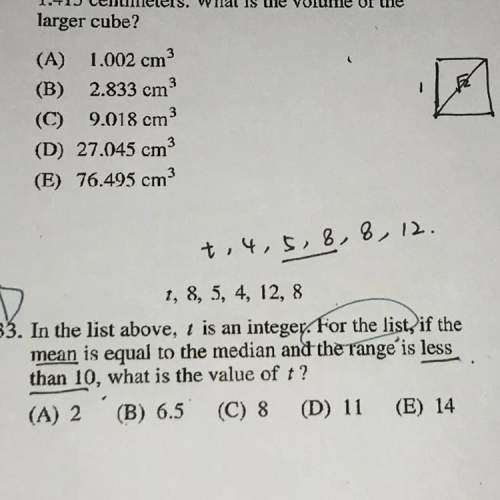
Mathematics, 24.03.2021 19:00 theman300045
The function B(x)=2(3)* can be used to determine the number of bacteria, B(x), in a sample after x hours. Which of the following statements is true?

Answers: 1


Another question on Mathematics

Mathematics, 21.06.2019 14:30
Click on the graphic until you find the right quotient. (36xa - 30xb) ÷ (-6x2)
Answers: 3



Mathematics, 21.06.2019 20:30
Does the function satisfy the hypotheses of the mean value theorem on the given interval? f(x) = 4x^2 + 3x + 4, [−1, 1] no, f is continuous on [−1, 1] but not differentiable on (−1, 1). no, f is not continuous on [−1, 1]. yes, f is continuous on [−1, 1] and differentiable on (−1, 1) since polynomials are continuous and differentiable on . there is not enough information to verify if this function satisfies the mean value theorem. yes, it does not matter if f is continuous or differentiable; every function satisfies the mean value theorem.
Answers: 1
You know the right answer?
The function B(x)=2(3)* can be used to determine the number of bacteria, B(x), in a sample after x h...
Questions

Mathematics, 02.07.2019 00:30

History, 02.07.2019 00:30


Mathematics, 02.07.2019 00:30




Mathematics, 02.07.2019 00:30

Mathematics, 02.07.2019 00:30

Mathematics, 02.07.2019 00:30










Arts, 02.07.2019 00:30




